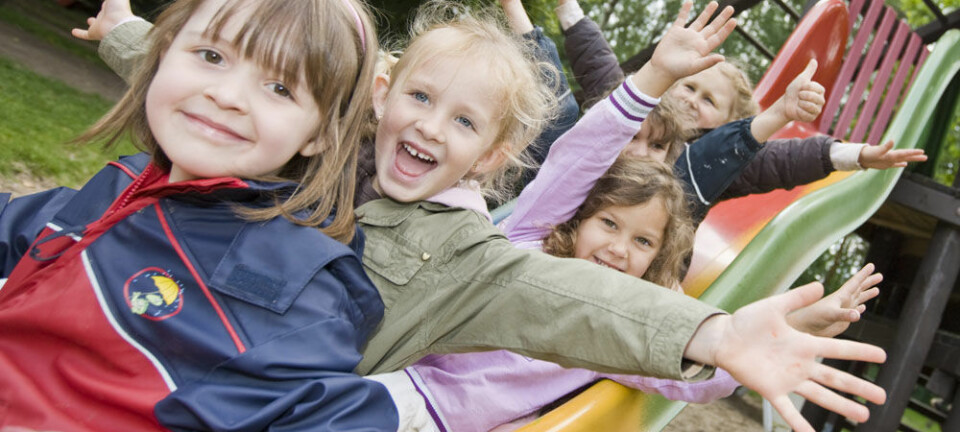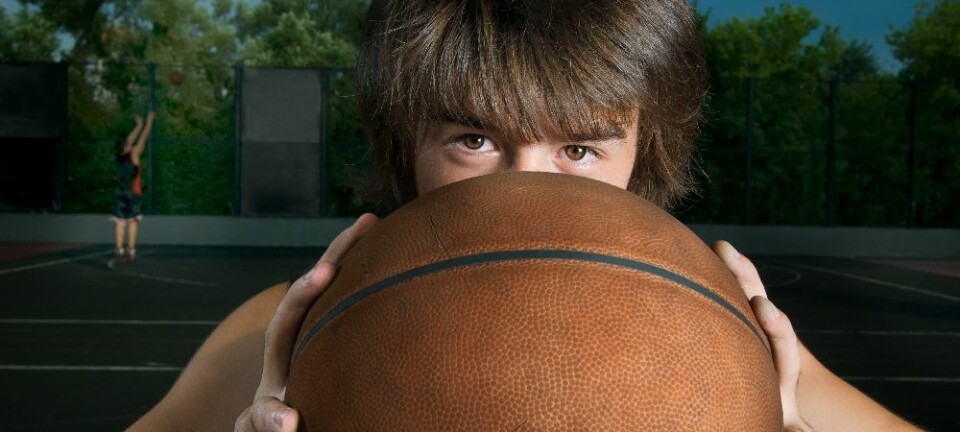An article from University of Oslo

Women athletes suffer more knee injuries
Why are female handball players so prone to anterior cruciate ligament tears? Is there anything we can do to avoid these injuries?
Denne artikkelen er over ti år gammel og kan inneholde utdatert informasjon.
The anterior cruciate ligament tears very suddenly - and without any warning.
Generally, the injury occurs in the absence of physical contact with an opponent, and during feinting movements that the player has made on innumerous occasions before. What is actually going on when the ligament ruptures?
PhD candidate Eirik Kristianslund has tested all the players in the Women's Elite Series in his hunt for the answer to this question.
"It is unique that in such an extensive study as this we have been able to follow top athletes so closely, and on such a large scale", comments Kristianslund, who praises the excellent collaboration with the sports environments in Norway.
Women are more susceptible
Women have a three- to five-fold greater risk for experiencing an anterior cruciate ligament injury than men. About four percent of the players in the Women's Elite Handball Series suffer a cruciate ligament rupture - every single year. And, naturally enough, scientists are looking at the differences between men and women for the answer.
One of these differences is their movement pattern.
Kristianslund explains that the way the men move means there is less danger of a cruciate ligament injury.
"Men's natural movements put less strain on the cruciate ligament. Women have poorer ability to control their knees, and it is therefore more difficult to keep their knees over their toes during these movements. Their knees in fact fall more together during these movements.
In handball more than half of the injuries occur during feinting movements," explains Kristianslund.
"Our goal is to identify how the players jump and feint in order to see if these movements can predict whether or not the players will incur an injury."
The secret of movement
Generally the anterior cruciate ligament tears during feinting movements. Therefore it is important to find the technique that gives least load on the ligament. And the best way to do that is to watch the players in action.
Therefore they perform certain exercises while the researchers film them; this means that they can determine exactly the angles of the joints in the extreme positions, and can measure the forces the players exert during the movement. Meticulous studies that are intended to reveal every minute movement - because this is where the answer lies.
The movements are a drop jump and a feint. The players jump from a 30 cm high box, land symmetrically and then jump as high as they can.
During the feinting movement, the test person attempts to feint a defender who is standing still, while at the same time receiving a ball during the feint. All this is intended to replicate normal movements as far as possible.
The researchers compare the jumps and feints. The jump technique is used as a test to assess the risk, and the feints tell more about the actual injury situation.
"We test how the player jumps to determine her risk for incurring an injury. The injuries occur in feinting situations and we are therefore interested in the relationship between jumps and feints", explains Kristianslund.
"By finding feint techniques that load the knee as little as possible, we can also give advice on exercises and technique training that we believe will reduce the risk for injury", he explains further.
Pain instead of stability
The purpose of the anterior cruciate ligament is to prevent the shin bone moving too far forward of the thigh bone. At the same time, it ensures stability when the shin bone moves. Its purpose is to hold in place and stabilise. If it tears, the stability disappears - and instead there is extreme pain.
Anterior cruciate ligament injuries are extremely painful. And once the damage is done, it takes a long time for the injury to heal completely.
Kristianslund talks about a rehabilitation period of six to twelve months.
"Now players are recommended to wait a whole year before taking up handball again after an anterior cruciate ligament injury", he relates. Therefore there are many reasons to minimise the risk for a cruciate ligament injury as far as possible.
Effective prevention
In the study, researchers measure movement, strength, balance and anatomy - all so that they can map what determines an increased risk for tearing the anterior cruciate ligament. The hope is to identify the characteristics of players who injure themselves. And the insight is easy to put into practice. The findings can be used in personalised training to reduce the risk for injury.
"This is what is so exciting about the research we are doing now – we can see directly how it can be used and that it gives results", states Kristianslund.
A training programme with warm-up for 15 minutes three times a week halves the risk for injury. This is most probably just as effective regardless of which sport is played.
"We believe that certain exercises are important in preventing anterior cruciate ligament injury regardless of which you sport you play. But it is also import that the warm-up reflects the movements that are produced in the sport in question. That makes it easier to follow-up the preventive training", relates Kristianslund.
Experience from past training programmes combined with knowledge on how feinting techniques affect the load on the cruciate ligament, can make it easier to know exactly which movements players must avoid in order to keep their anterior cruciate ligament intact.
-------------------------------
Read the Norwegian version of this article at forskning.no
































